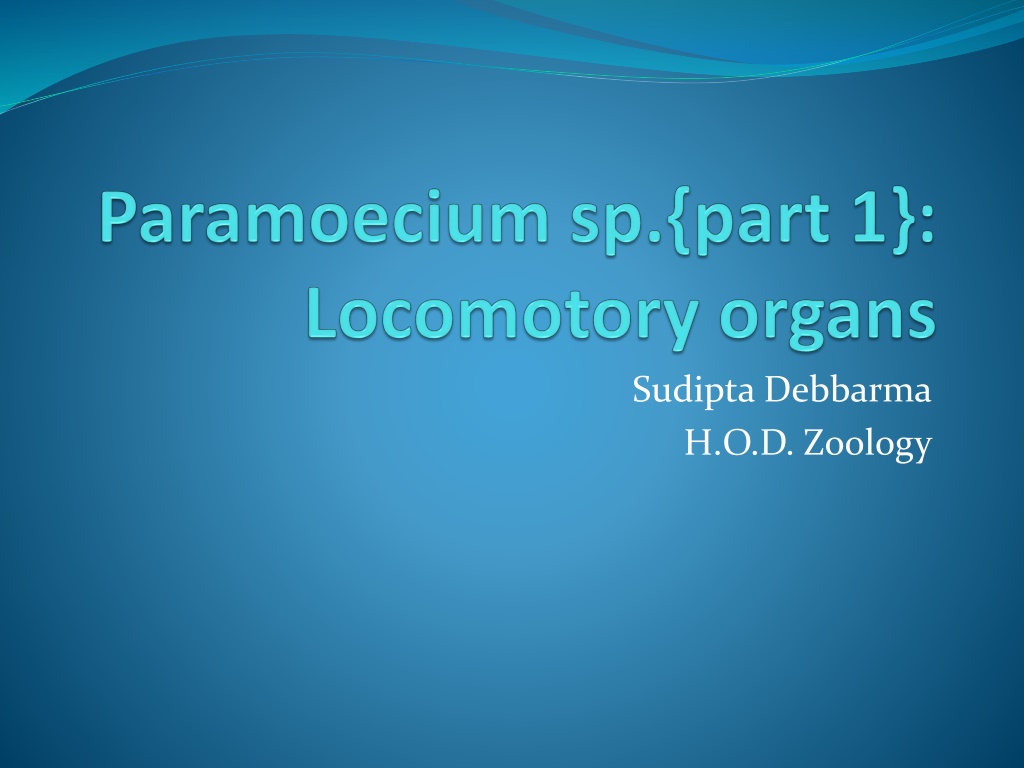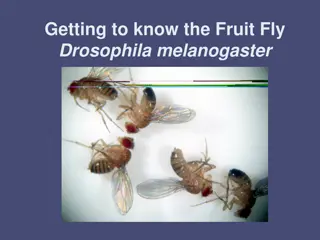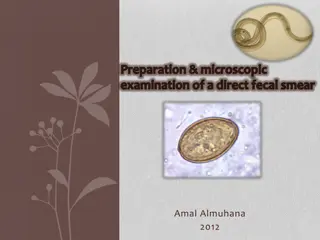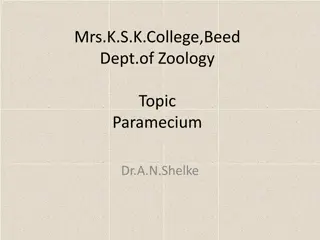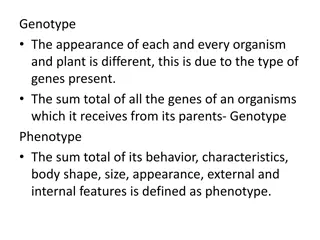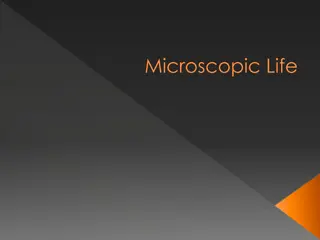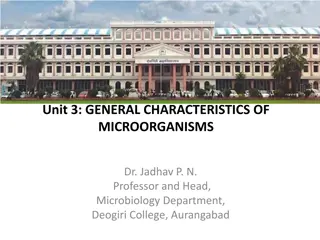Understanding Paramoecium Caudatum: A Microscopic Organism with Unique Characteristics
Paramoecium caudatum is a typical ciliate protozoan characterized by the presence of cilia as a locomotor organelle, nuclear dimorphism, and a unique form of sexual reproduction called conjugation. Commonly found in freshwater habitats, this microscopic organism has a distinct structure with a pellicle and cilia aiding in locomotion. The ultrastructure of cilia reveals intricate details about its composition, including subfibrils and filaments. Explore the fascinating world of P. caudatum through its habitat, structure, and ultrastructure of cilia.
Download Presentation

Please find below an Image/Link to download the presentation.
The content on the website is provided AS IS for your information and personal use only. It may not be sold, licensed, or shared on other websites without obtaining consent from the author. Download presentation by click this link. If you encounter any issues during the download, it is possible that the publisher has removed the file from their server.
E N D
Presentation Transcript
Sudipta Debbarma H.O.D. Zoology
Introduction Paramoecium is a typical ciliate protozoa. Ciliates are characterised by the presence of cilia as locomotororganelle, nuclear dimorphism & a unique type of sexual reproduction called conjugation. The 2 types of nuclei are morphologically & physiologically distinct from one another- Macronucleus and Micronucleus
Habit & habitat P.caudatum is commonly found in freshwater ponds, pools, ditches, streams, lakes and rivers. It is specially found in abundance in stagnant ponds rich in decaying matter, inorganic infusions, and in sewage water. It is a free living organism.
Structure Size & shape: P.caudatum is a microscopic organism & visible to the naked eyes as minute elongated body, it measures between 170 to 290 microns. It looks like a sole of a slipper. Hence the animal is known as Slipper animal cule. The body is covered by a thin, double layered elastic pellicle made of gelatin.
Pellicle: It has 2 membranes. Outer membrane is continuos with cilia Inner membrane is continuous with ectoplasm Cilia: Locomotory organ Originated from a basal granule 2 central longitudinal fibrils & 9 peripheral fibrils
Ultrastructure of cilia The cilia are bounded by an unit membrane of 90A thickness. The bounded space contains a watery substance called matrix. In the matrix there are 11 longitudinal fibrils. Out of the 11 fibrils 2 are in the centre and others at periphery. Each outer fibril is 360A in diameter and composed of 2 sub fibrils of 180-250A diameter. These subfibrils are known as Subfibril A & B.
Subfibril A gives out 2 thick projections from its one side. The arms are directed in clockwise direction. Both the sub fibrils have common wall. The 2 central fibrils do not have any subfibrils. Each central fibril has a diameter of about 250A . Both the central fibrils remain separated by a space of 350A . Gibbnos 1967 has reported that the sheath of the central fibrils gives out 9 radially oriented links to each subfibril A The high resolution Electron microscopy has revealed that each fibril is composed of 10-12 filaments. Each filament is beaded. These beads are considered as the basic subunit of the tubule structure of cilia.
